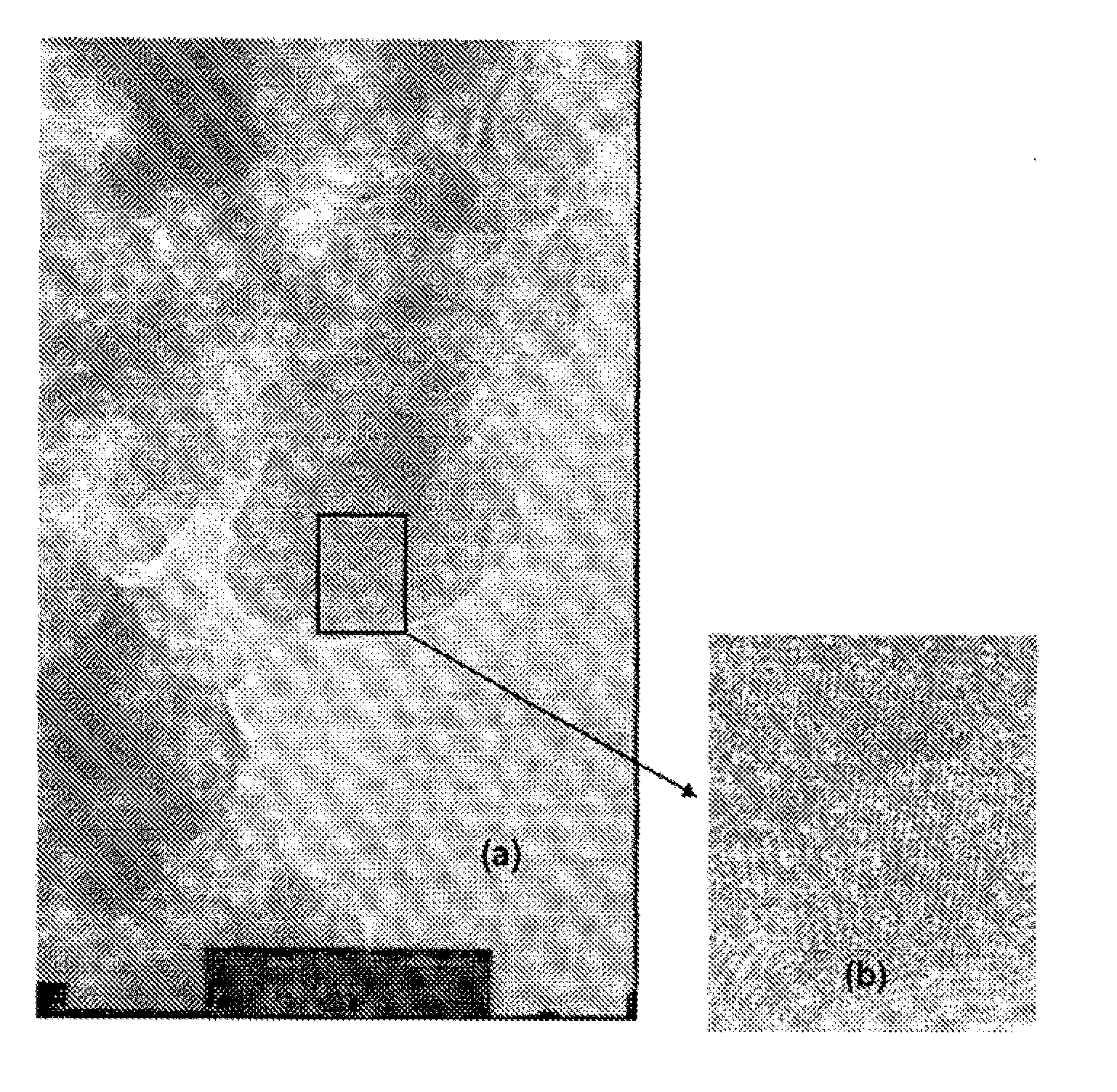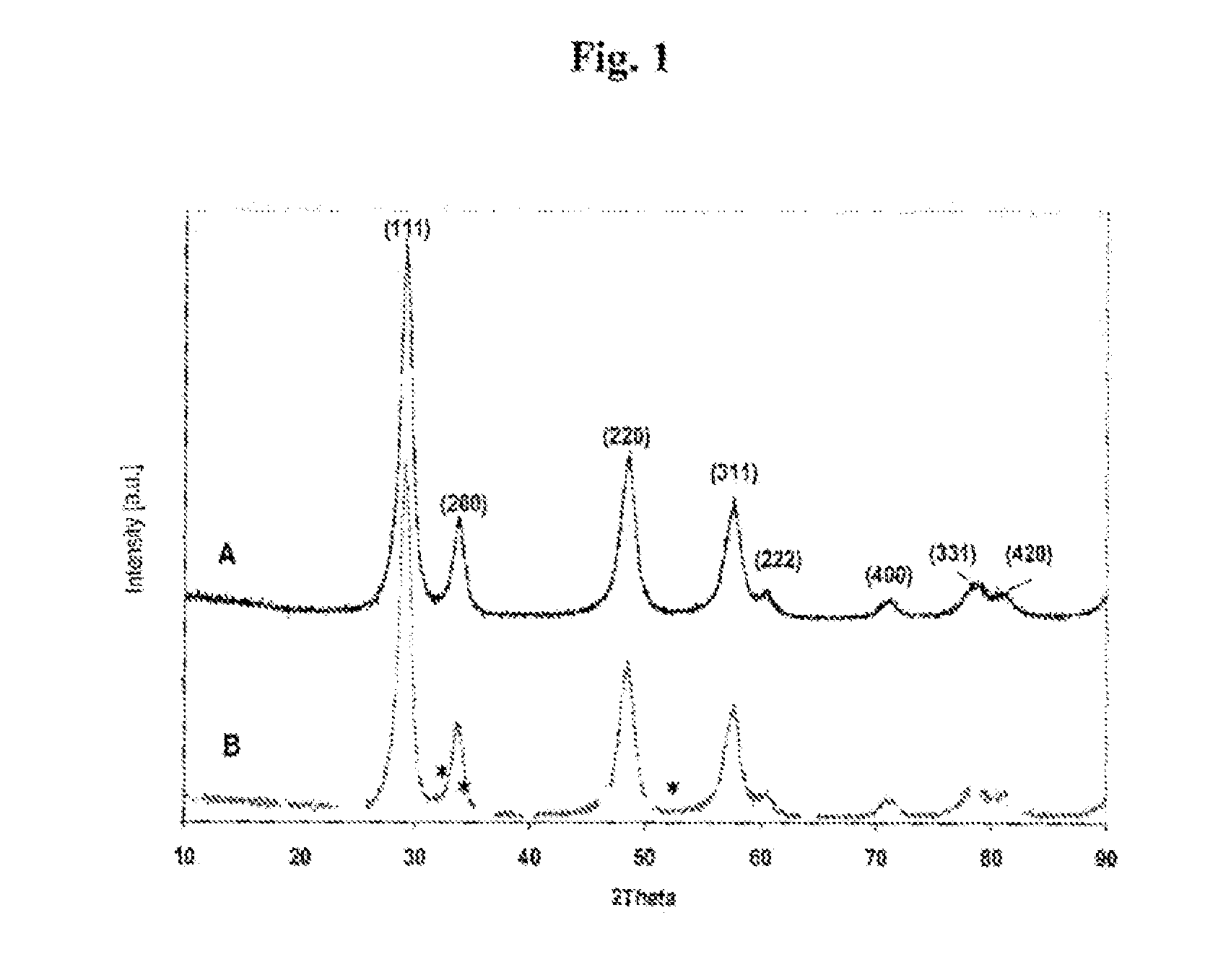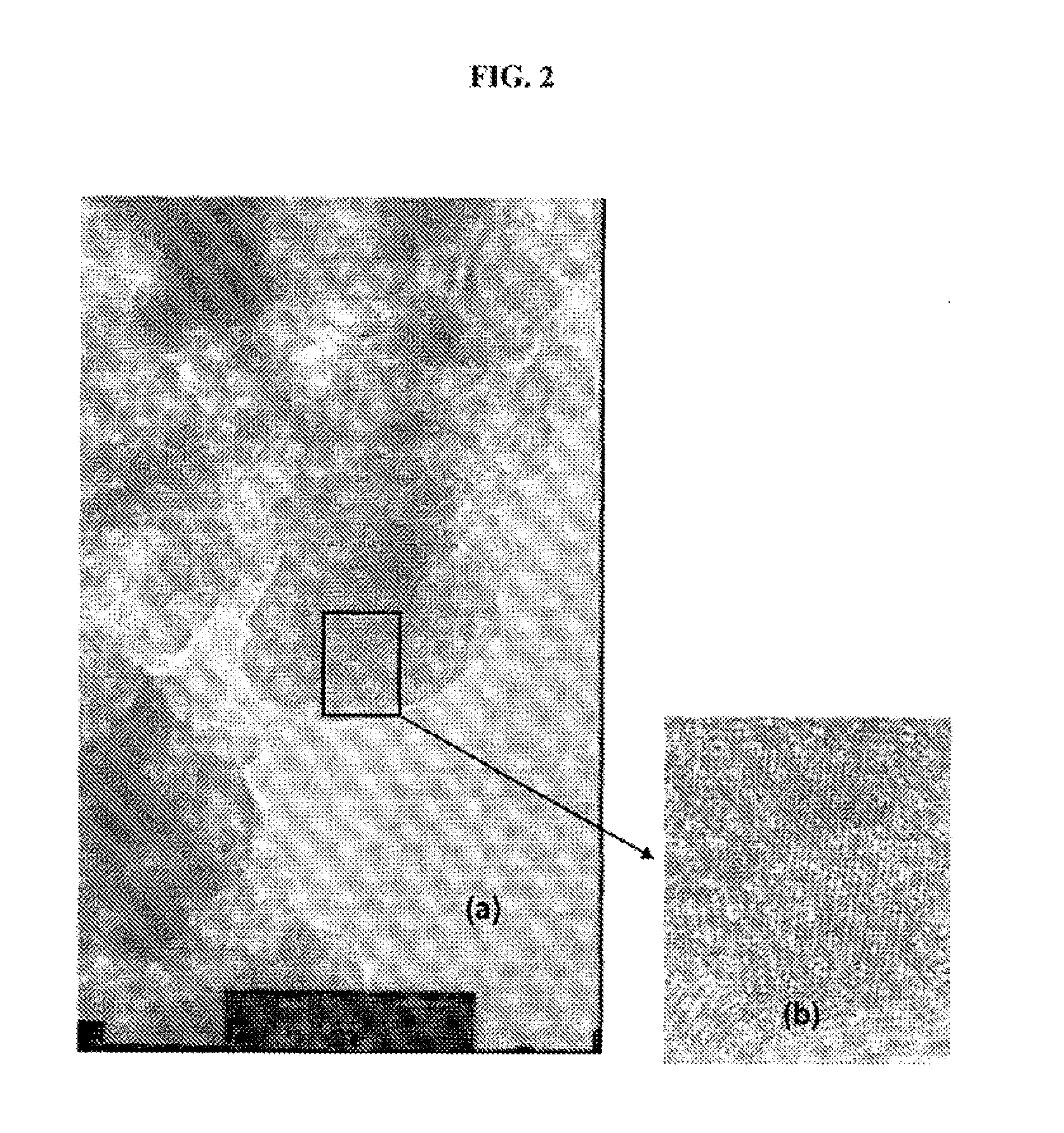Catalytic composition for treating coal combustion gases, method for preparing same, catalytic system including same, and use thereof
- Summary
- Abstract
- Description
- Claims
- Application Information
AI Technical Summary
Benefits of technology
Problems solved by technology
Method used
Image
Examples
example 1
Preparation of a Catalytic Composition
[0040]A catalytic composition was prepared by using rhodium nitrate Rh(NO3)3.2H2O (Alfa Aesar−purity>99.9%) and a solid solution of ceria-zirconia-mixed oxide Ce0.62Zr0.38O2 prepared via a hydrothermal route.
[0041]A solution of rhodium nitrate was prepared by dissolving the rhodium nitrate Rh(NO3)3.2H2O in distilled water at ambient temperature, in order to obtain a solution, the nitrate concentration C[nitrate] of which, expressed as % by weight, is given in table 1 below. Next, 2.5 ml of this solution were added dropwise to 5 g of Ce0.62Zr0.38O2 powder while stirring vigorously, so as to carry out an incipient wetness impregnation of the mixed oxide by the rhodium nitrate.
[0042]The suspension obtained was subjected to a heat treatment comprising the following successive steps:[0043]drying at ambient temperature for 12 hours;[0044]drying in an oven at 80° C. for 3 hours in order to evaporate the water;[0045]heating up to 110° C. and holding at ...
example 2
Use of the Catalytic Composition for the Treatment of a Gaseous Mixture
[0073]A gaseous mixture was treated by the samples of catalytic composition according to the invention and, by way of comparison, by a sample of mixed oxide not bearing rhodium.
[0074]In table 3, the volume composition of the gaseous mixture to be treated is given in the second column and the amount of hydrocarbon calculated for one atom of carbon is given in the third column (C1 for CnH2+n=1 / n).
TABLE 3VolumeVolume composition C1Compoundcomposition [ppm][ppm]NO250—Toluene 64450C3H6133400C3H8 50150O25%—ArBalance—
[0075]The catalysis tests were carried out by passing the gaseous mixture to be treated over the catalytic composition or over the mixed oxide at atmospheric pressure with a flow rate of 0.25 l / min. The flow rates of the gases were controlled by BROOKS SERIES® 5850E mass flowmeters. The tests were carried out in a glass U-type reactor placed in a vertical furnace. The temperature was programmed and controll...
example 3
[0089]The performances of an Rh(N) / Ce0.62Zr0.38O2 catalyst according to the invention were compared with those of a catalyst composed of the mixed oxide without rhodium Ce0.62Zr0.38O2 and those of a catalyst composed of the mixed oxide impregnated by rhodium which is only in cationic form Rh4+, according to the process described above in example 1, but using a solution of rhodium chloride instead of the solution of rhodium nitrate.
[0090]FIG. 5 represents the degree of conversion of NOx to N2 as a function of the reaction temperature, during the treatment of a gaseous mixture containing 250 ppm of NO, a mixture of hydrocarbons HC (1000 C1), 5% by volume of O2, the balance being argon, respectively by Rh (N) / Ce0.62Zr0.38O2 (), Ce0.62Zr0.38O2 (▴) and Rh(Cl) / Ce0.62Zr0.38O2 (▪), said catalysts having been previously calcined for 2 hours at 773 K (i.e. approximately 500° C.), HSV=30 000 h−1.
[0091]The results obtained show that starting from a treatment temperature of 580 K (i.e. approxim...
PUM
| Property | Measurement | Unit |
|---|---|---|
| Temperature | aaaaa | aaaaa |
| Temperature | aaaaa | aaaaa |
| Temperature | aaaaa | aaaaa |
Abstract
Description
Claims
Application Information
 Login to View More
Login to View More - R&D
- Intellectual Property
- Life Sciences
- Materials
- Tech Scout
- Unparalleled Data Quality
- Higher Quality Content
- 60% Fewer Hallucinations
Browse by: Latest US Patents, China's latest patents, Technical Efficacy Thesaurus, Application Domain, Technology Topic, Popular Technical Reports.
© 2025 PatSnap. All rights reserved.Legal|Privacy policy|Modern Slavery Act Transparency Statement|Sitemap|About US| Contact US: help@patsnap.com



